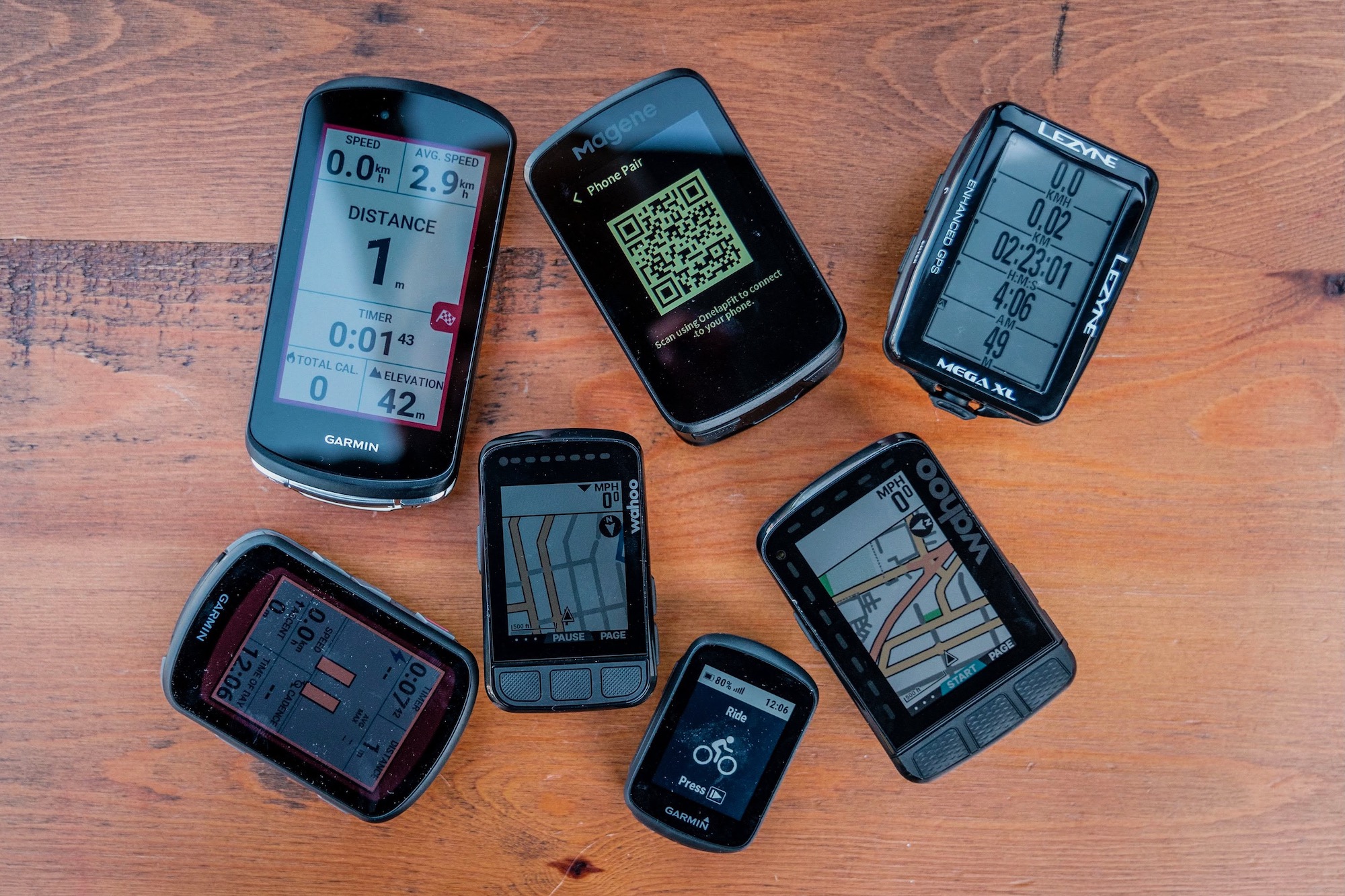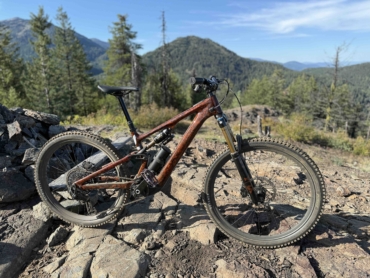Despite the importance of a bike’s fit and all the potential pitfalls, most people don’t need a bike shop specialist to help them when it comes to selecting a bike size. If you have reservations about buying a bike without seeing it first, you’re not alone. Many people hesitate to purchase a new bike online because they can’t test-ride it.
Before you shop for a bike, you’ll need to take a few body measurements. Bike sizes are based on a person’s height and body frame dimensions — not on weight. You’ll want to know an accurate height and inseam measurement.
In this guide, we’ll steer you through the how-to-measure bike size process so you can feel confident about buying a bike online or with a specialist.
Bike Sizing: How It Works

Many bikes offer sizing that you’re familiar with, such as S, M, L, or XL. But some bikes come in inches, and road bikes usually come in every centimeter measurement.
The frame size of a bike refers to the length of its seat tube. This measurement is given in one of two ways. The “C-T” measurement runs from the center of the bottom bracket (where the cranks enter the bike frame) to the top of the top tube (the horizontal tube that runs between the headset/handlebars and the seat post).
The “C-C” measurement runs from the center of the bottom bracket to the center of the top tube (C-C). This measurement has become less useful because of the propensity of sloping top tubes on modern bikes. Just because you ride 56cm in one brand doesn’t mean you ride 56cm in all brands.
How to Measure Bike Size: Reach and Stack

To alleviate this issue, brands nowadays offer detailed geometry specifications to help cyclists discern what the labeled frame size really means. The two most important numbers are reach and stack, which are internationally accepted standards.
Reach is the horizontal distance between the center of the bottom bracket and the center of the head tube. Stack is the vertical distance between the center of the bottom bracket to the top of the head tube. These numbers are much more representative of the actual dimensions of the bike frame than the seat tube-based sizing still used to label bikes.
There is no industry standard for gathering bicycle measurements or fitting the bike to the rider, and the antiquated sizing labels further complicate comparisons between models. But some generalities are still useful. If you have longer legs for the length of your torso, then you will generally fit better on a bicycle with a taller stack. If you have shorter legs but a longer torso, then you will generally want to get a bike with a longer reach.
Also, if you have longer arms, then a longer reach will fit better. And conversely, if you have shorter arms, then a shorter reach will most likely improve the fit. There are also women’s-specific frames, which generally abide with shorter reaches than men’s-specific frames with the same stack.
Still, every bike brand should frame geometry specifications based on their measurement standards. To find sizing and frame geometry charts, check the brand’s website for their preferred standards.
The video below does a good job of explaining reach and stack on a road bike.
What Measurements Do I Need?
Understanding the dimensions and geometry of a bike is half the job. You also need at least two different body measurements to find the perfect bike size for your body structure.
Height: This is the key first step. Most manufacturers have bike size charts that show the appropriate bike sizes for specific heights. Height alone cannot guarantee a perfect fit, so we recommend that you also get the next measurement.
Inseam length: Stand with your feet planted about 6 inches apart as you would do when you straddle a bike. Measure the length from your crotch to the bottom of your feet. When using this method, it is easiest to have someone with you to help you measure.
If you are alone, use a hardcover book to help measure your inseam. Stand against the wall with bike shoes on; straddle the book, spine up; and mark the wall with a pencil where the book’s spine meets the wall. Then, you can step away from the wall and measure the mark to the floor. Be sure to measure several times for accuracy.
Almost every brand has an online sizing guide for each of its models. These guides are sufficient for most riders, but some will be on the cusp between sizes, and some will have specific needs based on dimensions that may not be “average.” If you know the reach and stack of a current or former bike that worked well for you, you can work backward from there by referencing the geometry chart.
Those on the cusp between sizes will have to choose between prioritizing the stack or reach and then choose to go up or down on the size. If you value the standover height more than the horizontal length, then you would size down. This is more common on mountain bikes and commuter bikes since, as standover height is more important.
If you value the reach over the stack, then you would normally size up. This is more common on road and gravel bikes, as the riding position is much more static and usually held over a much longer time period.
How to Measure Bike Fit: Bike Type & Sizing

Road bikes and gravel bikes are much more sensitive to the reach measurement than mountain bikes. This is because, for the majority of riding time, you are seated in a fixed position, and the bike is mostly horizontal. Your body is much more static, so having too long or too short a reach becomes more apparent as the miles pile on.
The fore and aft saddle position should be set based on your hip’s relationship to the pedals for proper biomechanics and efficiency. This adjustment should not be used to correct for the improper reach. Different length stems can be used to dial in the reach, but there is a limit to this before it starts negatively affecting handling.

Mountain bikes are much less sensitive to reach, as you stand and use various body positions, and the bike’s attitude constantly changes as well. The bike and you are almost never in a static position for very long, so the reach issue isn’t as prominent. Standover height is much more of an issue on mountain bikes, but modern bikes usually have plenty of this for each size.
Once you get the bike, you can — and should — take it to a local bike shop for a once-over. While there, they can help dial in these small adjustments that can drastically improve your fit. And they can suggest parts that may aid in this process.
How to Choose the Right Bike for You
Different types of bikes have their pros and cons, but there’s no best or worst. The right bike is the one that you find comfortable, practical, and enjoyable to ride.
Picking the right bike is a personal decision, so make sure to do your homework and have a realistic budget in mind. Bike prices certainly have risen over the years, and biking popularity has spiked since the beginning of the COVID-19 pandemic, exacerbating these price jumps. But the market has been self-correcting some since then.
The hardest part of the process is deciding what type of bike to purchase. Once you’ve pinpointed the type of bike that fits your needs, then it’s time to focus on specific guidelines for how to measure the bike’s size, functionality, and comfort.
How Do I Know if My Bike Fit Is Right?
The correct bike fit allows for efficient and pain-free pedaling dynamics and a comfortable fit for the rest of the body for even extended rides. When seated in the comfortable position on the saddle, the knee should roughly be over the pedal spindle with the crankarm horizontal to the ground, and with the heel level with the ball of the foot.
The hip angle shouldn’t be too closed off, and the back should be able to be relatively straight with the arms comfortably extended with hands in the normal riding position on the handlebars.
Should I Size Up or Down?
If you are in between frame sizes, you need to decide if you want to prioritize the overall height of the bike (stack) or the overall horizontal dimension (reach). This also depends on what kind of bicycle you want.
If you want to prioritize the height more than the length, then size up. This is more prevalent in mountain bikes and commuters, as the standover height is usually more important.
If you want to prioritize the horizontal length, then size up. This is more common on road bikes and gravel bikes, as the seated position is much more static, and this dimension becomes more important for longer-distance cycling.








